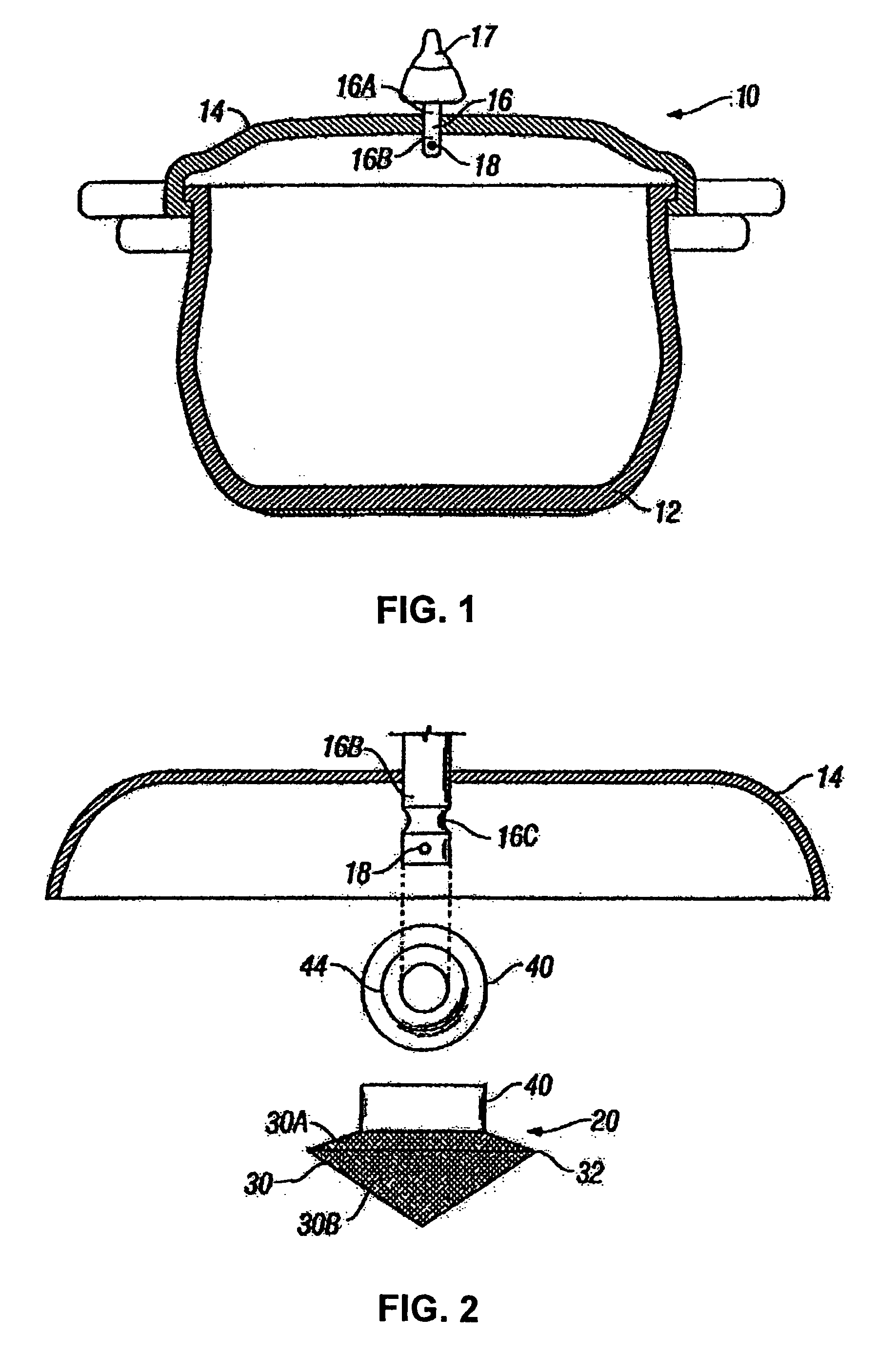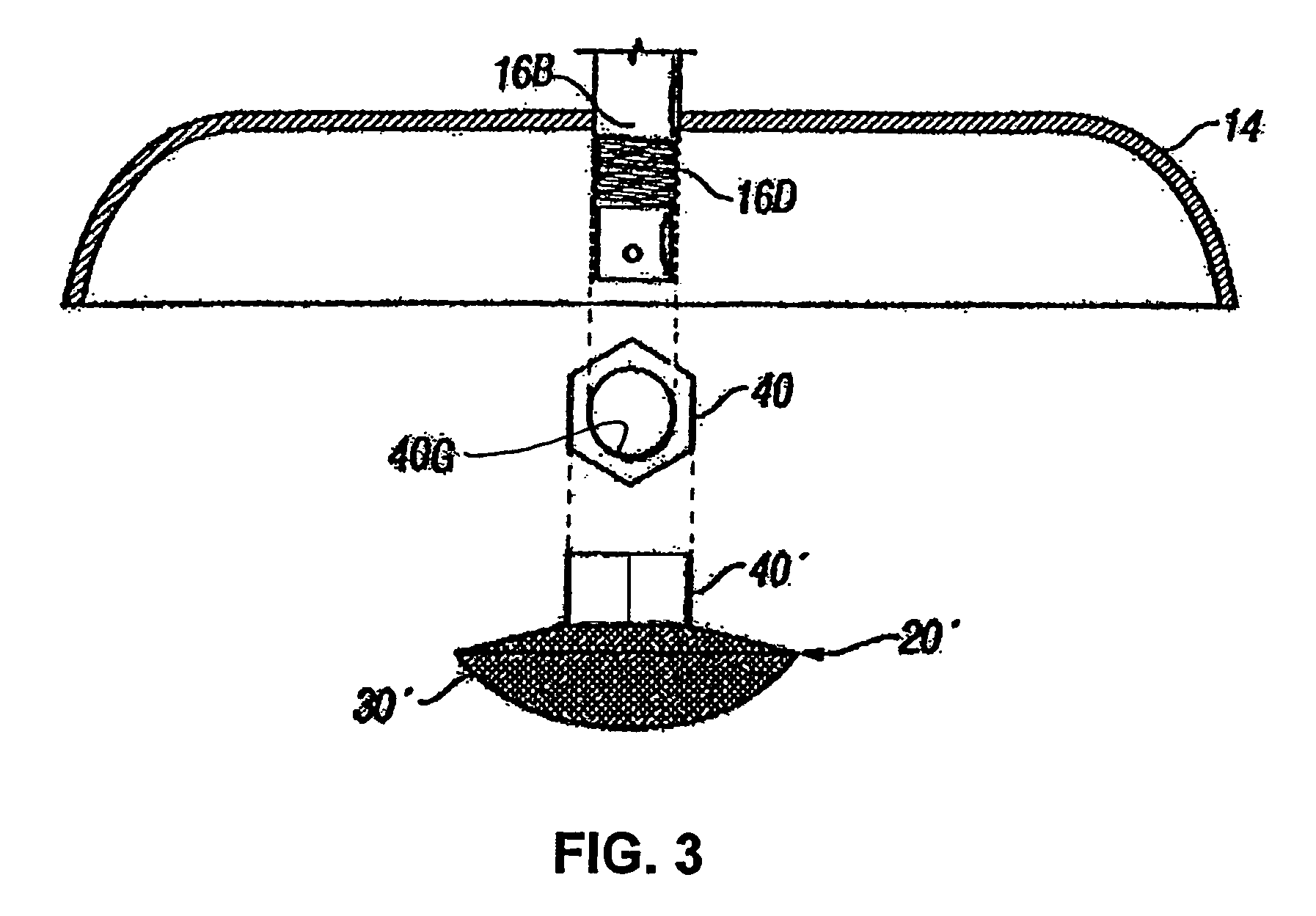Safety cap for a pressure release valve of a pressure cooker and a pressure cooker using the same
a safety cap and pressure cooker technology, applied in the field of pressure cookers, can solve the problems of clogging of the pressure cooker, wasting a large amount of heating energy applied to the pot, and requiring far less cooking or heating time, so as to prevent the explosion caused by clogging, save the pressure cooker, and eliminate the user's insecurity
- Summary
- Abstract
- Description
- Claims
- Application Information
AI Technical Summary
Benefits of technology
Problems solved by technology
Method used
Image
Examples
Embodiment Construction
[0026]The safety cap of the present invention (See FIG. 1) is used in an ordinary pressure cooker 10 that includes a pot 12, a lid 14 and a pressure regulator or pressure release valve 16 that releases the pressure (heated or hot air) inside the pot 12 during cooking. The pressure release valve 16 is provided at the center of the lid 14 and has a pressure release passage (not shown) therein.
[0027]More specifically, the pressure release valve 16 comprises an upper portion 16A, which is exposed outside the lid 14 and has a pressure regulation weight 17, and a lower portion 16B, which is located under the lid 14 and is covered by a safety cap 20 described below. The lower portion 16B of the pressure release valve 16 is formed with air intake apertures 18 (for instance, one aperture is opened in the lower end surface of the pressure release valve 16, and four apertures are opened in the peripheral area near the lower end of the pressure release valve 16; however, only one aperture is sh...
PUM
 Login to View More
Login to View More Abstract
Description
Claims
Application Information
 Login to View More
Login to View More - R&D
- Intellectual Property
- Life Sciences
- Materials
- Tech Scout
- Unparalleled Data Quality
- Higher Quality Content
- 60% Fewer Hallucinations
Browse by: Latest US Patents, China's latest patents, Technical Efficacy Thesaurus, Application Domain, Technology Topic, Popular Technical Reports.
© 2025 PatSnap. All rights reserved.Legal|Privacy policy|Modern Slavery Act Transparency Statement|Sitemap|About US| Contact US: help@patsnap.com



